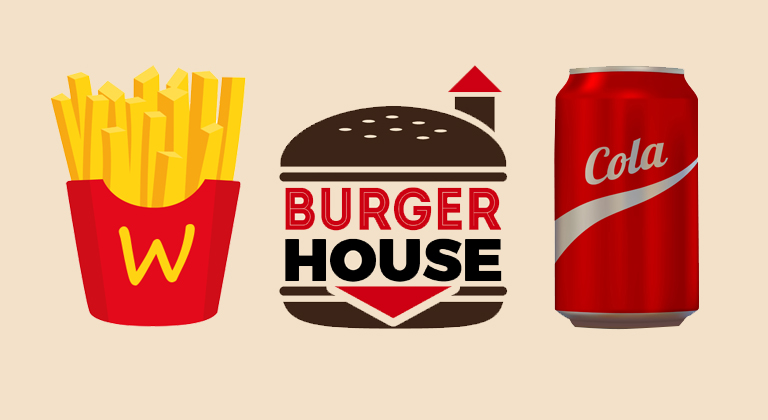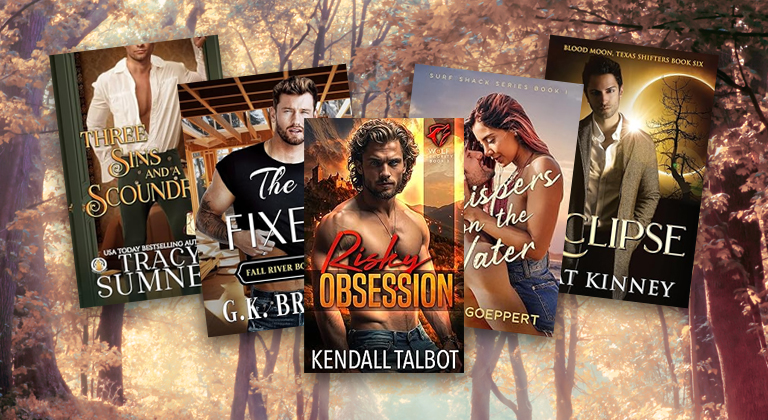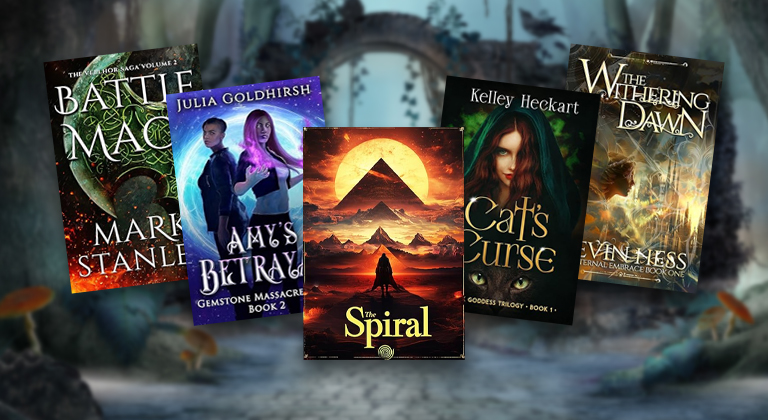Approaching Your Book from the Inside Out
There are many paths along the self-publishing journey, but many of the most successful authors pick the well-worn route over diving into the unknown, because they know that the readers are already following that path and returning to it, again and again. It’s familiar, they like the scenery and feel comfortable knowing where it will lead them. The danger of venturing out into the thicket, swinging your literary machete to forge a brand-new path, is that you might end up at a dead end and have to retrace your steps, sometimes starting your journey almost from the beginning. And even then, will anyone want to risk following you into that darkness?
You can do both, though. It’s possible to follow the road often traveled, but veer off here and there to make your route more unique. Comfortable, yet different. Today, Ginger is here to lead you through the darkness, and he even has a few shortcuts to show you.
Aspiring authors often finish their final draft and then try to figure out how to market their books. The really successful ones do it the other way around.
In our recent discussion with Stefan Emunds on our Fully Booked Podcast, something we’ve touched on before in previous blog posts really became evident: That truly successful authors sometimes work out how to make their books successful before they’ve even written them.
In his book The Eight Crafts of Writing, Stefan describes how his novels weren’t having the impact that he’d wanted them to, and he recounts his journey of going ‘back to the drawing board’ and learning what makes books truly successful; and the end result was him having to rewrite many of his previously ‘finished’ works. That’s a journey similar to my own, and one I thought was worthy of a blog post.
The Writer’s Journey
When I began writing and self-publishing, I wrote the stories I wanted to tell; and I wrote them the way I wanted to tell them. While I nominally conceded that I was writing ‘romance novels’, I never stopped during the writing process to truly figure out if the books I was writing were written in the way successful romance books should be.
(Spoiler alert: They weren’t.)
This wasn’t out of laziness, maliciousness, or arrogance. I just figured that I’d already read a bunch of books, I had a degree in English literature, so how hard could it be to get it right?
And with that approach, I wrote books in third-person point of view and included all sorts of elements that I’d seen in the ‘bonkbuster’ romance novels I’d grown up reading.
But the fact is, times change – and so do popular book genres. In my stubbornness I wrote a whopping eleven full-length novels and saw all of them linger in obscurity before I finally checked myself and decided to start reading what was currently successful in my genre – and it was a very humbling experience.
Stefan Emunds recounts a similar experience in his own book. It’s very grim to start reading the really successful books in your genre and spotting how few things your own works have in common with them.
For example, the old-fashioned and traditional approach to storytelling I’d used – writing in third-person perspective – was practically unheard of in the romantic suspense novels that were hitting the current bestseller lists. Similarly, once-popular tropes like bed-hopping heroes were considered the scum of the earth by modern-day romance readers (and rightly so.) Likewise, my covers didn’t match what was in the Top 100, and I’d taken the concept of writing for “my niche” to such extremes that I realized I was practically writing for an audience of one!
So, I had to do exactly what Stefan did and go ‘back to the drawing board.’ But the good news is – it worked!
Choosing to be successful
After eleven less-than-successful books, I sat down and started making a list of all the elements that successful romantic suspense novels included – right down to the first-person perspective and alternating hers-and-his chapter format. It was kind of an uncomfortable experience and I’ll admit I didn’t adopt everything on the list that I’d identified (for example, writing in past tense is the hill I’ll die on.)
But what was really remarkable was how much of a difference it did make to my writing – not just in terms of the success of the books, but also the experience of writing them. Like the advertising giant David Ogilvy once pleaded: “Give me the freedom of a tight brief.” By forcing myself to stick to all these ‘rules’ of successful romantic suspense novels, I actually found it far quicker and more fun to write them!
And the impact was immediate. My first novel writing with these new rules earned more each day than all eleven of my previous novels combined – and by the time I’d written the third romance novel in this new format, I finally stumbled across my ‘formula’ and published my first best-seller – allowing me to turn my hobby of writing into a career.
But the books that made me successful would have been unrecognizable to the plucky young writer who’d embarked on this self-publishing journey five years earlier. They’d have probably been the kind of romance novels I wouldn’t have chosen to read in the name of genre research – even though, ironically enough, that’s why I’d never been successful until then!
I’d had to go through a deeply uncomfortable, humbling, and introspective journey before I found my groove – and the interesting thing about talking to Stefan during our podcast was that he’d trod the very same path I had; as have almost all successful writers. Just like me, it took years of work before any of us became an “overnight success.”
In fact, I think it’s almost like a right of passage! A transformative story no less significant than the ones we force our characters on.
But how can aspiring authors shortcut this process? Here are some tips.
- Don’t rely on writing like your favorite authors used to. My biggest early hurdle was understanding that the books that had inspired me to start writing in the first place – by authors like Ian Fleming, Leslie Charteris, and Jilly Cooper – were pretty archaic by the time I was old enough to start self-publishing. Many of the conventions and styles that had once been popular were long out of favor, and the way these authors wrote just didn’t gel with modern readers in the same way. It’s all well and good to be inspired to write by timeless classics – but it’s important to learn the craftsmanship that is popular among successful authors now if you want to join them in the bestseller ranks. That’s why I switched to a first-person formula while writing, and followed the beats of more modern romance novels than the classic ‘bodice rippers’ I’d stolen from my mother to read.
- Think very hard about your hook. The other mistake I made was writing my books first and only then trying to figure out how to make them popular among potential readers. I’d obviously had a reason for writing these books, but because I was so close to my work, it was often difficult to pinpoint what those reasons where (which would also be the reasons anybody would consider purchasing them!) One of the other advantages of going ‘back to the drawing board’ and thinking critically about my writing was that it enabled me to identify which elements were appealing in each tale I planned on weaving before I wrote them – so I could bring them to the forefront during the initial writing process instead of trying to dig through my ‘finished’ manuscript to find them after the fact.
- Maybe that book you think you’ve finished was just a first draft. Speaking of books that are ‘finished’ in inverted commas, one of the other things I had to concede after this humbling come-to-Jesus moment of introspection was that many of the the books I intended to write and publish next wouldn’t be ready for prime-time as soon as I’d written “The End” and sent them to my editor. As Neil Gaiman says: “Your first draft is you telling yourself the story” and a number of the books I wrote ended up needing far more than a gentle edit to get them into a shape worthy of publication. One took six months of re-writing almost from the ground up; but it ended up being a pretty good book as opposed to the disorganized mess I’d originally drafted. Getting serious about being successful means putting in a lot of the hard work and grind that many of us had started writing to escape!
It’s worth it, though.
If the experiences of Stefan Emunds, myself, and countless other successful writers proves anything, it’s that self-publishing remains a viable platform for becoming a successful author. It’s a lot more difficult to break into the industry than it used to be, but holding the power to publish where, what and when you want has democratized access to the digital bookstores, and those of us willing to learn, grind, and have a little faith can still make writing a lucrative and enjoyable hobby, if not a self-sustaining career all of it’s own.
As the years have gone by, I think eBook readers have become a lot more discerning about what’s offered on the digital shelves – and that’s one of the reasons why it’s a lot more difficult to break into the business. However, publishers are still way behind the eight ball when it comes to successful marketing and publishing and that means those of us willing to go through some of the difficult steps I’ve outlined above can carve out our own little literary empires even amidst the writers supported by the ‘Big Five’ publishing houses.
It just requires approaching writing as an entrepreneur as well as an artist, and a willingness to be self-aware and to identify our own weaknesses and try to improve upon them. That all begins and ends by learning what works and what doesn’t in our chosen genres and applying those lessons to our own books, no matter how uncomfortable that process is.











